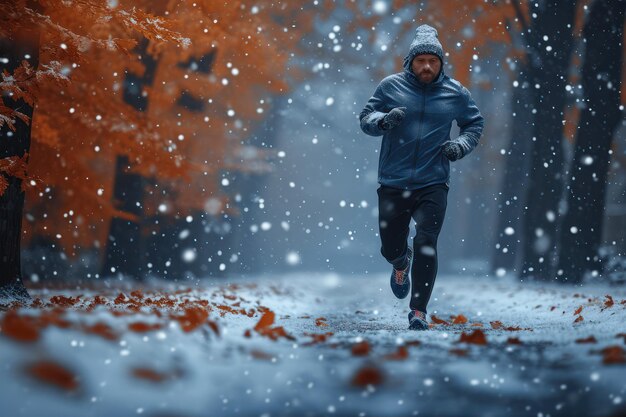
Running in winter: Tips for staying warm and safe
Share
Running in the winter can be an invigorating and rewarding experience, but it requires a little extra preparation to ensure you stay warm, safe and injury-free. When the temperature drops and the roads become slippery, it is important to adapt both clothing, running style and routines to get the most out of your runs. In this blog post, we will share some useful tips to make winter running both comfortable and safe.
1. Dress correctly for winter running
A. The layer-on-layer principle
The most effective way to dress for winter running is to use the layer-on-layer principle. This gives you the opportunity to regulate your body temperature during the run:
-
Inner layer: Choose a moisture-wicking material such as wool or technical fabric to keep sweat away from the skin. This helps you stay dry and warm.
-
Midlayer: Use an insulating layer, such as fleece, to trap the heat your body produces. This layer should be light and breathable.
-
Outer layer: Choose a windproof and water-repellent jacket that protects against weather and wind. Make sure it is breathable to avoid overheating.
B. Cover hands, head and feet
It is important to protect the extremities, as they are most exposed to the cold:
-
Hat and neck: A hat or headband to cover the ears, as well as a neck or buff to protect the neck and face from cold air.
-
Gloves: Use gloves or mittens to keep your hands warm. Wool or moisture wicking gloves work well.
-
Winter running socks: Use wool socks or special winter running socks that keep your feet warm and dry.
2. Pay attention to the substrate
A. Running on snow and ice
When the snow settles and the ice forms, it is important to be extra careful to avoid damage:
-
Spikes and spikes: Invest in spiked shoes or spikes that give better grip on slippery surfaces. This reduces the risk of slipping and falling.
-
Shorter strides: Adapt your running style by taking shorter and more controlled strides. This provides better stability and balance on uneven or smooth surfaces.
-
Avoid dangerous areas: Try to avoid areas with a lot of ice or deep snow. Choose routes that are well maintained and be aware of pedestrian crossings and slopes where it may be slippery.
3. Plan the route and time of the run
A. Choose the right time
Daylight is important for both safety and visibility. Try to run in the middle of the day when it is brightest and warmest. If you have to run early in the morning or late in the afternoon, make sure you are clearly visible:
-
Reflectors: Wear clothing with reflectors or a reflective vest to ensure that you are seen by motorists and other road users.
-
Headlamp: A headlamp gives you better visibility in the dark and helps you see any obstacles on the road.
B. Choose safe routes
Choose a route that is well lit and has little traffic. Stick to routes you know well so you can anticipate any hazards, such as slippery spots or uneven ground.
4. Adapt the pace and training plan
A. Reduce the intensity
Cold can make the muscles stiffer, and it takes longer to warm up. Therefore, start the run at a leisurely pace and give your body time to warm up. Reduce the intensity on the coldest days to avoid injury.
B. Increase the heating
Spend some extra time warming up before you start running. This can include dynamic stretches and light jogging indoors before going outside. A thorough warm-up reduces the risk of muscle strain and other injuries.
C. Listen to your body
Winter running can be demanding, so it is important to listen to your body. If you feel cold, stiff, or uncomfortable, adjust your pace, take a break, or end your session. It is important to prioritize health and safety over performance in the winter months.
5. Ensure proper restitution
A. Dry clothes after the run
As soon as you finish running, it is important to change into dry and warm clothes. Even if you don't feel sweaty, damp clothing can cause rapid cooling when you stop, increasing the risk of hypothermia.
B. Hot drinks and nutrition
A hot drink after your run can help you get your body temperature back up quickly. Also, be careful with your nutrition after the run, especially when it's cold outside. The body needs extra energy to stay warm, so make sure you get something nutritious as soon as possible.
C. Give yourself enough time to recover
Cold can make your body use more energy to keep warm, which can mean you need more time to recover after a session. Be aware of this and give yourself enough time to recover before the next training session.
Summary
Running in the winter can be a challenge, but with the right preparation, it can also be a rewarding part of your training routine. By dressing correctly, paying attention to the surface, planning your route carefully, adjusting your pace, and ensuring proper recovery, you can enjoy safe and efficient runs throughout the winter season. Remember that the most important thing is to stay warm, safe, and injury-free, so you can continue to run and enjoy the benefits of exercise, whatever the weather.
